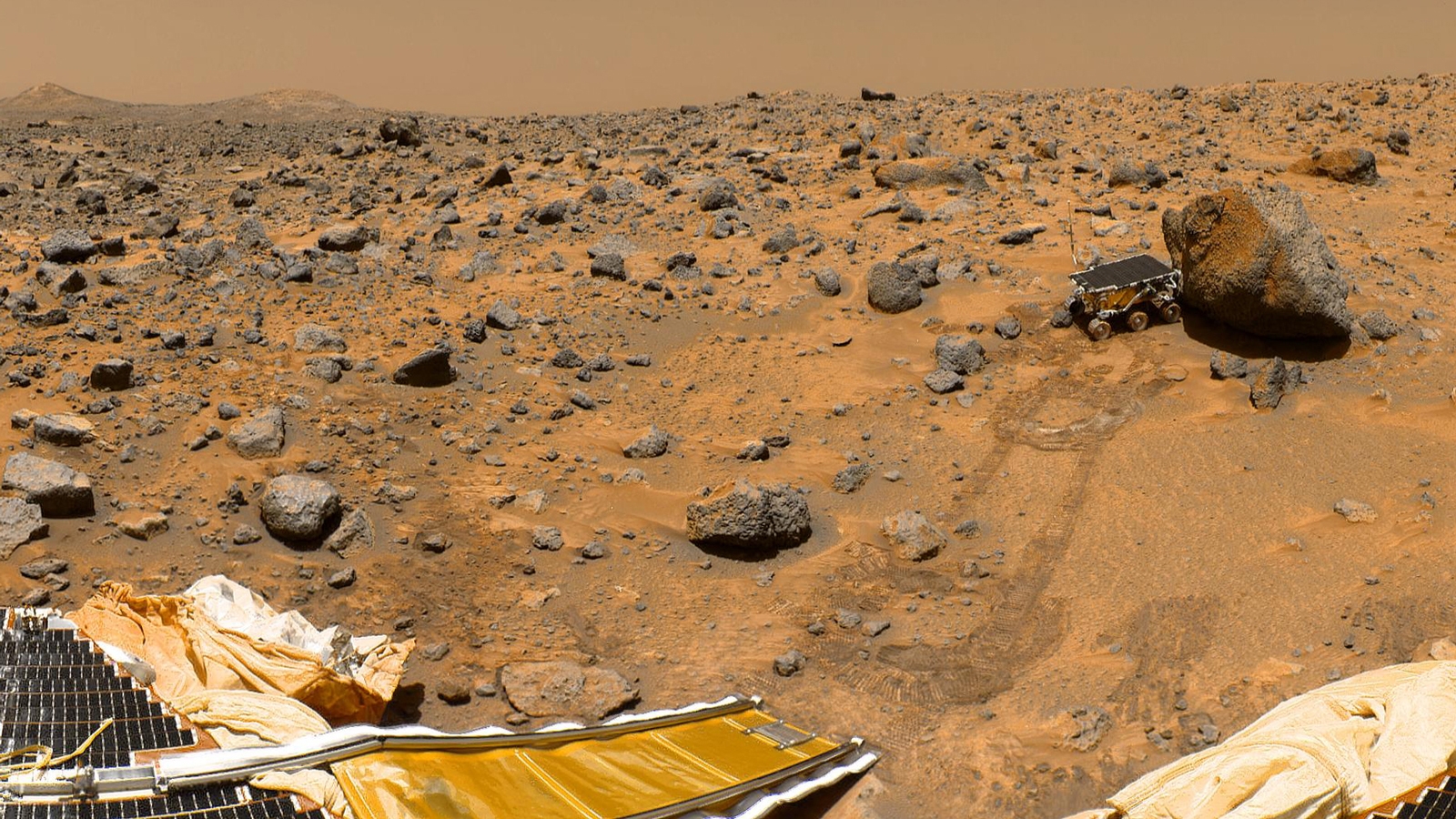
The nature of many of the rocks and materials on the surface of Mars remains mysterious. Volcanism has played an important role in forming many of the surface materials on Mars, and water has played a role in the alteration of many of those volcanic rocks and ashes. A geologic process that could have contributed to the formation of many of the volcanic materials is “hydrovolcanism,” the explosive interaction of rising magmas with water at, or near, the surface either in its liquid form or as ice.
A study conducted by Dr. William Farrand, a senior research scientist at the Space Science Institute of Boulder, Colorado, has examined materials produced by these types of water-magma interactions. Given the explosive nature of such interactions, the volcanic materials produced are fragmented to ash, and the rapid cooling of volcanic ash that is produced causes much of it to rapidly solidify as glass. Steam deposited with the glassy ashes or later interactions with heated water cause the glass to change into a variety of different materials. The types of volcanic materials examined are believed to constitute a substantial portion of the surface and near-surface materials on Mars.
Dr. Farrand and co-investigator, Dr. Shawn Wright of the Planetary Science Institute, conducted fieldwork at a number of sites in Idaho, Utah, and New Mexico. Drs. Farrand and Wright worked with collaborators from Stony Brook University in New York, Stirling University in Scotland, and Mount Holyoke College in Massachusetts to study these samples, as well as samples from previous work done in Iceland and Washington state.
The samples were examined using a number of spectroscopic techniques including reflectance, thermal emission, and Mössbauer spectroscopy, as well as more traditional methods, such as X-ray diffraction and X-ray fluorescence, to determine mineralogy and chemistry. Many of the analytical approaches used are analogous to those available on current and planned Mars rovers.
The team found that materials associated with liquid water-magma interactions were more highly altered than those produced by ice-magma interactions. Alteration minerals produced by the former set of interactions included certain clay minerals, known as smectites, and silica-rich minerals, known as zeolites. The ice-magma interaction materials contained smaller quantities of smectites and were devoid of zeolites.
There were also visible color differences in some of the cemented altered volcanic materials (known as tuffs), with some rapidly cooled gray to brown colored tuffs associated with the water-magma alteration products that weren’t observed with the ice-magma altered materials. The types of minerals found and color differences observed can be used for purposes of comparison against possibly analogous materials that might be found on Mars- thus giving insight into how the Martian surface materials formed.
Given that rover-analogous analysis approaches were used, the results of this research will be valuable for interpreting results from the Spirit, Opportunity, and Curiosity rovers. Potentially, materials similar to those examined by Dr. Farrand’s team were present at one or more of those landing sites. The work will also be useful for the interpretation of data that will come from NASA’s planned Mars 2020 rover as well as from the European Space Agency’s planned ExoMars rover — both planned for launch to Mars in 2020.
These findings are described in the article entitled Spectroscopic examinations of hydro- and glaciovolcanic basaltic tuffs: Modes of alteration and relevance for Mars, recently published in the journal Icarus. This work was conducted by W.H. Farrand from the Space Science Institute, S.P. Wright from the Planetary Science Institute, T.D. Glotch from Stony Brook University, C. Schröder from the University of Stirling, and E.C. Sklute and M.D. Dyar from Mount Holyoke College.









